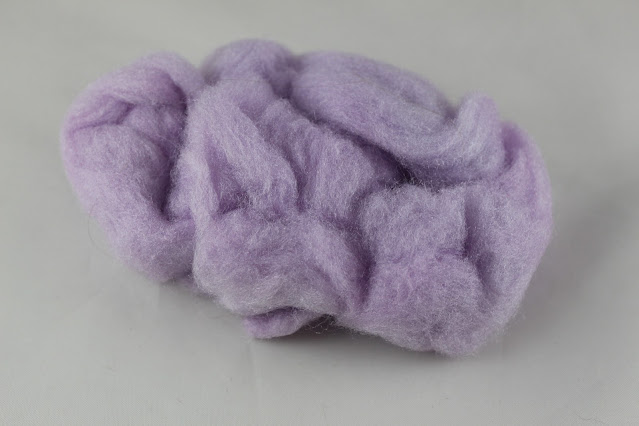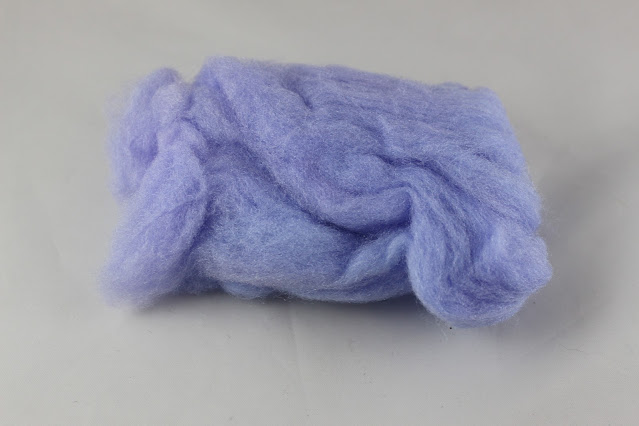I had quite a few things that I wanted to dye or over-dye so I set aside a full day to do as much as I could, time and available space to get it dry depending.
The first thing that I tackled was a shawl that I finished crocheting at the beginning of the year but was not happy because the yarn was darker in one part than the rest and this dark stripe ruined the shawl. I had to buy dye specifically for this as my usual dyes don't work on cotton. I have already blogged about the shawl and updated the post to show the finished dyed version and you can find that here.
I used a cold water Dylon dye in shade "Burlesque Red" and followed the instructions. The water isn't properly cold, it has to be hand warm to begin with but doesn't require any further heat. The shawl has come out pretty good though, I'm happy with it.
What I did do, whilst this shawl was having a nice soak, was to take a clean empty jam jar and scooped a small amount of dye water out of the dye pot and then pull off a 5g clump of undyed trilobal nylon from the 100g clump I have and pushed it into the dye water in the jar. I made sure it was fully submerged and just left it on the side for about half an hour.
The colour is nothing like the shawl, not even close, you would not think it was dyed using the exact same stuff at the exact same time. It has come out a pale purple colour but evenly dyed though and this will now go into my "ingredients cupboard" for use to add a bit of shimmer when I make my own fibre blends.
The next thing that I dyed was some bright yellow cotton yarn that I would like to tone down a lot to make a more usable and appealing colour.
I have chosen the same cold water Dylon dye but this time in shade "Ocean Blue", fully aware that over-dying something yellow with blue will no doubt make it become green.
I'm happy enough with the result of the yarn, not ecstatic, but it's fine. I also tried to dye some wool using the left over from the dye pot as it is supposed to be able to dye wool, just a much paler shade than you get from dyeing plant based fibres. It didn't work, barely touched it, so I laid it to one side to dry until I could get around to using my usual wool dyes.
I done the same thing with this dye pot, I took a clean empty jam jar and scooped a small amount of dye water out of the dye pot and then pull off a 6g clump of undyed trilobal nylon and pushed it into the dye water in the jar. I made sure it was fully submerged and just left it on the side for about half an hour.
The colour is nothing like the yarn, but then I don't expect it to be given that I am dying something white with blue dye so of course it will be blue. Again the result is evenly dyed and this will also now go into my "ingredients cupboard" for use to add a bit of shimmer when I make my own fibre blends.
The final thing that I wanted to dye today was the last of the white Jacob fleece that I have had a number of years, since 2014. I had already chosen a dye and despite the poor results from trying to dye some Whitefaced Dartmoor wool in the left over blue dye I decided to still give it a go with the cold water Dylon dye in shade "Olive Green", given the fact that this is fresh unused dye and not left overs. I have to say that it didn't work. The results were poor and actually looked like it had been stained with urine. Not nice at all. However, the clump of trilobal nylon that I had dyed in the jam jar came out a lovely shade of very pale olive green.

So I now have two decent-ish amount of wool that is wet from a failed dye attempts. The Whitefaced Dartmoor I am happy to allow to dry because its kind of a pale silver colour right now but the Jacob needs to over-dyed right now. I dig out my wool dyes and shade book and I get to doing some complex maths and weighing out the dyes I need. I chose a dye depth of 1%, that is 1g of dye for every 100g of dry fibre so its a good job I knew how much it weighed before I put it in the dye pot earlier, 427g. I made the 4.27g of powdered dye up using 45% River Blue, 45% Sunshine Yellow and 10% Ruby Red and got cooking - the wool dyes require high temperatures.
I am happy with the results and can't wait to see what it will look like when it is combed and made to look nice and fluffy.
I also dyed some Trilobal Nylon with this dye by scooping some of the dye water into a jam jar with a small clump of the Trilobal Nylon pushed down into it. This dye normally requires heat but I gave it a go with just it being stood on the side for about half an hour and it kind of worked. Its not evenly dyed but it did take up some of the dye anyway so that's OK and I have some Trilobal Nylon from an old supplier that is just like this, not evenly dyed, and she gets away with selling it like that so I'm happy enough.








No comments:
Post a Comment